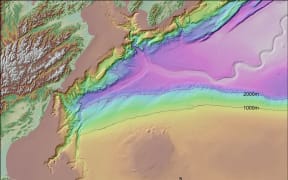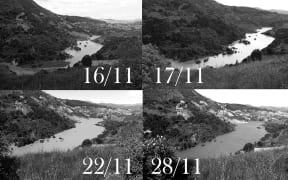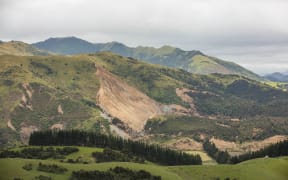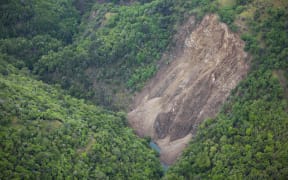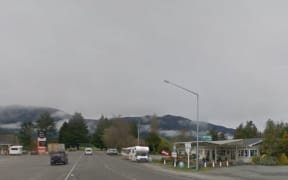Scientists urge caution before sediment from the slips along the Kaikōura coastline is pushed into the sea, with more information needed about the underwater impact of the recent quakes.

Photo: RNZ / Rebekah Parsons-King
The main road along the Kaikōura coastline has been hit by a number of huge landslips after last week's magnitude 7.8-earthquake and the ongoing aftershocks.
Scientists say pushing the sediment into the ocean is likely to hurt the paua and crayfish populations in that area, and compromise the food web which includes the area's big tourism drawcard of whales and dolphins.
The scientists are urging caution when it comes to using legislative shortcuts which would allow work to clear the slips to go ahead - including the possibility of moving the rubble into the sea.
The initial 7.8 magnitude earthquake raised the seabed along the Kaikōura coastline, stranding populations of paua, crayfish and other sea life.
In some parts the coastal shelf was raised more than five metres.
University of Canterbury professor of marine science David Schiel said he understood the urgency of getting the roads functioning again, but the local reefs were already compromised.
The coastline had sand and gravel along it. There were real concerns about how the material will be disposed of, and how much might end up in the near-shore zone and exacerbate the damage, he said.
"In big loads they smother things and they're very hard to clear by natural processes often, because they're what's called cohesive sediments, they sort of gloop together and sort of stay there."
Professor Schiel said marine life would only settle on rocky reef, survive and thrive once natural processes had removed the sediment - some of which would dissipate in tidal flows and wind-driven currents.
He said it depended on how much material ended up in the sea.
"The real question is, how limited is that in-shore rocky reef along that area and are we willing as a nation to sacrifice those reefs for a number of years in order to clear those roads?"

Quake damage to SH1 Photo: AFP
The sediment will mean sunlight, needed by seaweed for photosynthesis, would not penetrate the water and the productivity of the ecosystem will drop.
Juvenile organisms such as paua, molluscs and crayfish would also find it difficult to settle on the rocks.
Sharyn Goldstein, a University of Canterbury marine ecologist, said the productivity drove a lot of the richness and biodiversity of the Kaikōura coastline and it could have a cascade effect on the whales, dolphins and seabirds.
"A lot of the young fish that the seabirds feed on come up that phytoplankton and that zooplankton created within the surface waters relying on that productivity and clarity in the water so it's certainly feeds all the way up to the larger iconic species."
Professor Schiel said the question of how the reefs had been limited by the quakes and what impact the sediment dump would have needed to be known before action on the debris was taken.
"We should have that sort of information before they get a hard and fast plan of just taking it and dumping it and I'm sure somebody's thinking about that."
The Paua Industry Council said the Kaikōura region produced about 10 percent of New Zealand's exports, and about half of that comes from the area affected by the coastal rock uplift, which amounted to between 40 and 50 tonnes of paua a year.
It was the most important recreational catching area in the South Island.
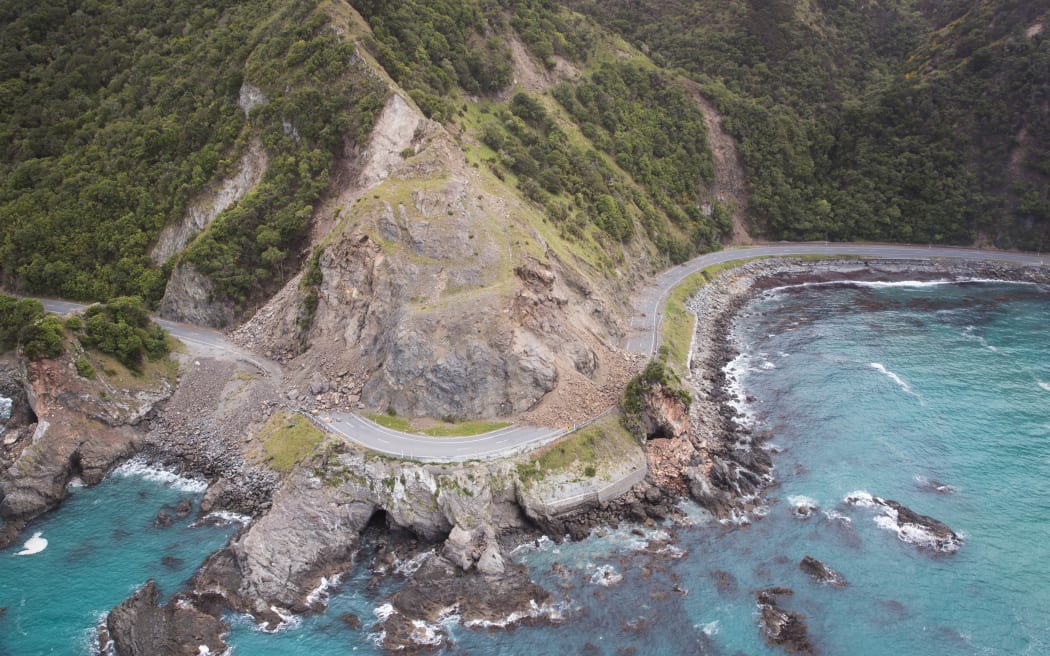
Photo: RNZ / Cole Eastham-Farrelly
Council chair Storm Stanley said you could clear the roads and take care of what was left of the shore's habitat.
The coast had lifted "substantially". He described it as an ecological disaster, but there was still surviving habitat and reasonably large numbers of surviving adult paua that were in deeper water.
"It's critical for the recovery of that piece of coastline that we don't make the damage worse.
"If large amounts of slip and rubble were to be tipped onto the remaining good habitat it's not going to help at all."
The final piece of three pieces of of legislation allowing the government and councils to remove the debris is making its way through Parliament.

